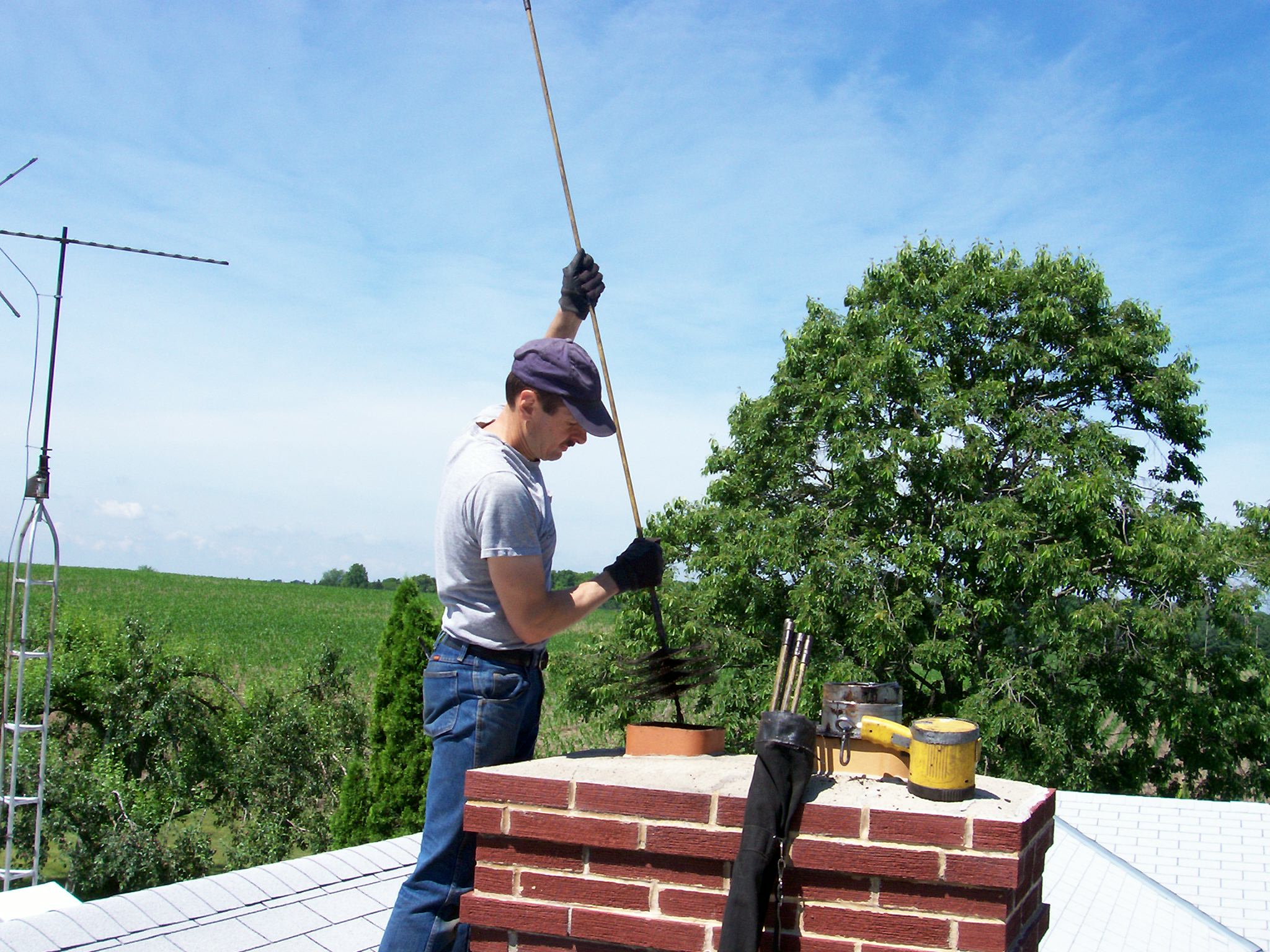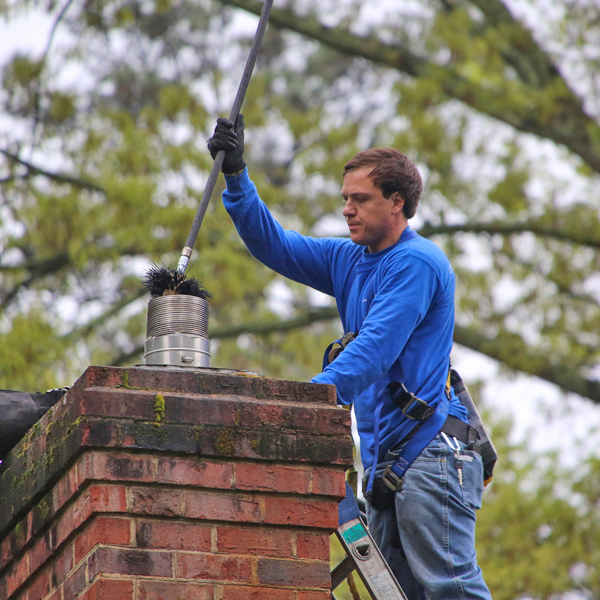Raise Your Home Convenience: Chimney Clean San Jose Solutions You Can Depend On
Raise Your Home Convenience: Chimney Clean San Jose Solutions You Can Depend On
Blog Article
Chimney Cleaning: A Step-by-Step Overview to Keeping a Healthy And Balanced Fireplace
Preserving a healthy fire place is essential for the safety and security and performance of your home. Regular chimney cleansing is a vital part of this upkeep routine. In this step-by-step guide, we will provide you with comprehensive guidelines on just how to effectively cleanse your smokeshaft, ensuring that it functions efficiently and reduces the danger of fire threats. By complying with these guidelines, you will find out just how to collect the essential tools, do an aesthetic examination, clear particles and accumulation, move the chimney, and finish the final steps for ongoing maintenance. With a specialist approach and focus to detail, you can confidently care for your fire place and appreciate its heat and comfort for years to come.
Gathering the Required Tools
To begin the procedure of chimney cleaning, the initial step is to gather all the necessary devices. Having the right tools at hand ensures a efficient and secure cleansing process. The important devices for chimney cleansing include a smokeshaft brush, a ladder, decline fabrics or plastic sheets, a flashlight, handwear covers, and a dust mask.
The smokeshaft brush is the main tool used to remove residue and creosote buildup from the flue. It is vital to select a brush that matches the dimension and form of your chimney. In addition, a durable ladder is essential to access the chimney securely. Ensure the ladder is stable and positioned on a flat surface.
A flashlight is essential for examining the smokeshaft's interior for any kind of indications of damages or blockages. Handwear covers are essential to shield your hands from soot and other dangerous materials, while a dirt mask aids stop the breathing of particles.
Performing a Visual Inspection

Using a flashlight, very carefully examine the indoor wall surfaces of the smokeshaft for any signs of damage, such as splits, loose blocks, or mortar degeneration. These concerns can endanger the smokeshaft's structural integrity and pose a major security risk. Furthermore, look for any type of indications of water damages, such as discoloration or efflorescence, as this can show a dripping smokeshaft cap or blinking.
Following, check the smokeshaft flue for any kind of blockages. Look for the presence of nesting materials, leaves, or particles that might have collected with time (Chimney Sweep San Jose). These blockages can limit air flow, boost the danger of carbon monoxide buildup, and hinder the smokeshaft's capacity to properly air vent smoke
During the visual examination, pay very close attention to the smokeshaft crown, which is the leading surface area that secures the smokeshaft from wetness. Try to find fractures or missing items in the crown, as these can permit water to enter the smokeshaft and create considerable damage.
Clearing Particles and Accumulation
After finishing the visual assessment, the next step in chimney cleaning includes clearing particles and accumulation to make certain the appropriate performance of the fireplace. Over time, particles such as leaves, branches, and animal nests can accumulate in the chimney, blocking the flow of air and triggering possible fire risks.
To get rid of debris and accumulation, it is necessary to utilize the right devices and techniques. A chimney brush, particularly made for this purpose, is made use of to get rid of loose debris and creosote from the chimney wall surfaces. It is important to choose a brush that matches the dimension of your smokeshaft to guarantee efficient cleansing. Prior to starting the cleansing procedure, ensure to cover the fire place opening up to protect against particles from dropping right into the room.
To start, put the brush right into the smokeshaft and relocate it up and down, scrubbing the walls to remove any kind of particles or creosote. Make use of a sweeping activity to make certain comprehensive cleaning. It is suggested to begin from all-time low and function your method up. When the brushing is total, make use of a vacuum or a smokeshaft brush expansion to eliminate the dislodged debris from the fireplace.

Sweeping the Chimney
The sweeping of the chimney is a vital action in keeping a healthy and balanced fire place. In time, residue, creosote, and other debris can build up in the chimney, obstructing the circulation of air and potentially creating an unsafe build-up of combustible materials. Routine chimney brushing up not only guarantees appropriate air flow however likewise avoids the danger of chimney fires.
When it comes to smokeshaft sweeping, it is highly advised to employ a specialist chimney move. These professionals have the knowledge and devices required to securely and successfully browse around here eliminate the accumulated particles from your smokeshaft.
It is necessary to keep in mind that the frequency of smokeshaft sweeping depends on several factors, such as the sort of fuel made use of, the quantity of use, and the kind of chimney. As a basic guideline, it is recommended to have your smokeshaft swept and checked at the very least when a year.
Last Steps and Upkeep
After completing the chimney sweeping procedure, the very first action in the last upkeep is to inspect the chimney cap and stimulate arrestor. These elements stop particles, pets, and rain from getting in the smokeshaft.

Check the inside of the fire place for any signs of damage, such as investigate this site fractures, loose blocks, or damaged mortar. These problems can influence the architectural honesty and safety of the fire place. Get in touch with a professional chimney sweep or mason to address them promptly. if any type of troubles are identified.
Finally, consider installing carbon monoxide detectors near the fireplace and throughout your home. These devices can detect the existence of this hazardous gas, supplying an early warning system in case of a chimney breakdown. Consistently examine and change the batteries in these detectors to guarantee their efficiency.
Conclusion
In verdict, complying with a step-by-step overview for smokeshaft cleaning is essential in maintaining a healthy and balanced fire place. By gathering the essential tools, doing a visual examination, getting rid of debris and build-up, and brushing up the chimney, homeowners can make certain the safety and security and effectiveness of their fire place.
The necessary tools for smokeshaft cleaning include a chimney brush, a ladder, drop fabrics or plastic sheets, a flashlight, gloves, and a dust mask.
A smokeshaft brush, especially developed for this function, is made use of to remove loosened debris and creosote from the smokeshaft walls. Regular chimney brushing up not just guarantees correct ventilation yet likewise prevents the risk of smokeshaft fires.
When it comes to smokeshaft sweeping, it is very suggested to work with an expert smokeshaft move. After completing the smokeshaft sweeping process, the initial step in the final upkeep is to inspect the smokeshaft cap and spark arrestor.
Report this page